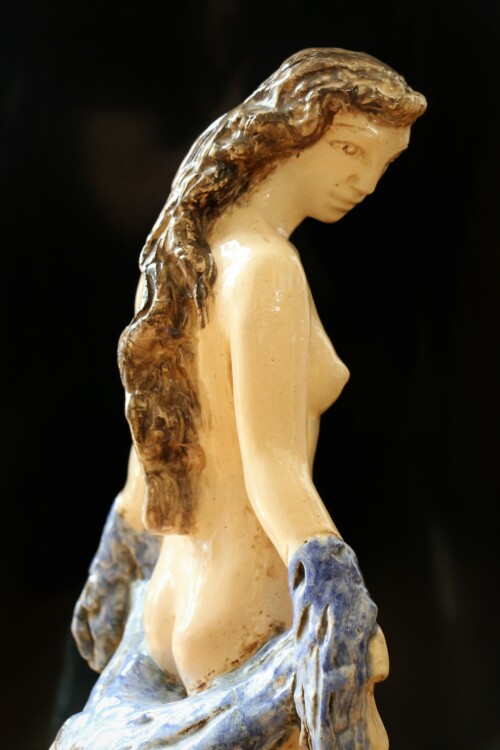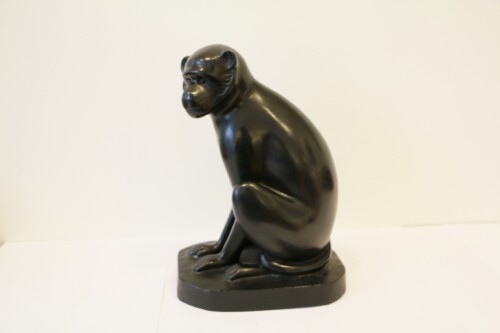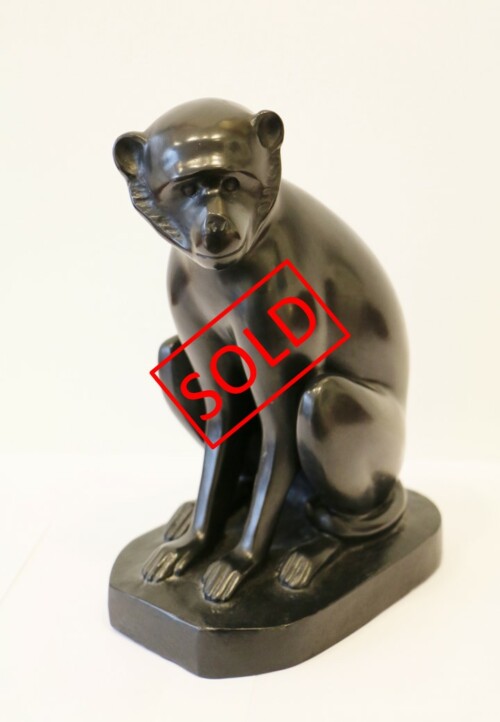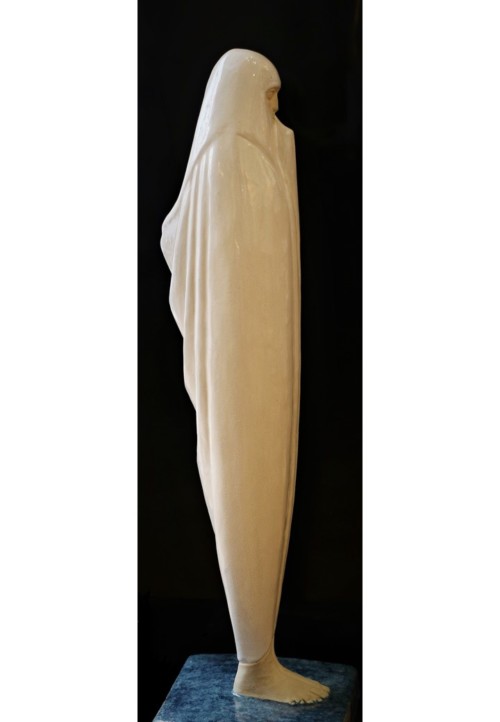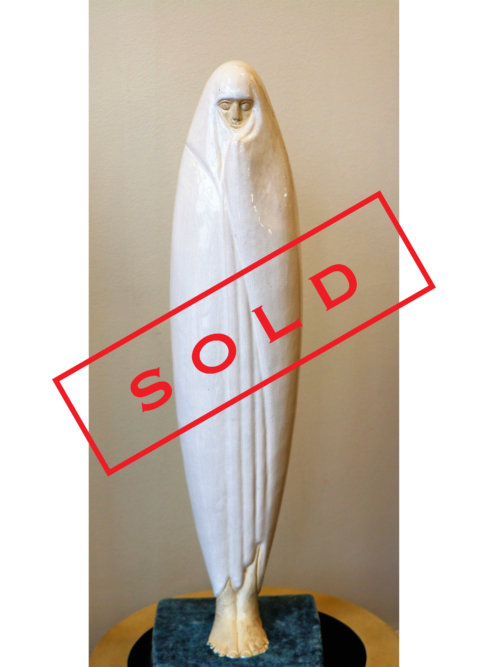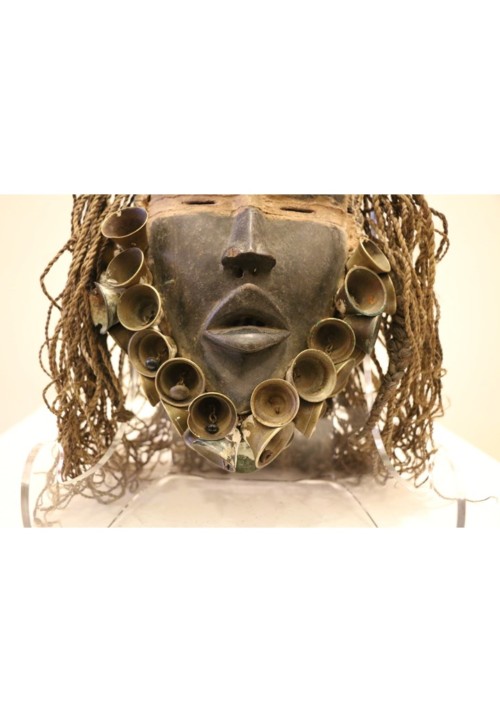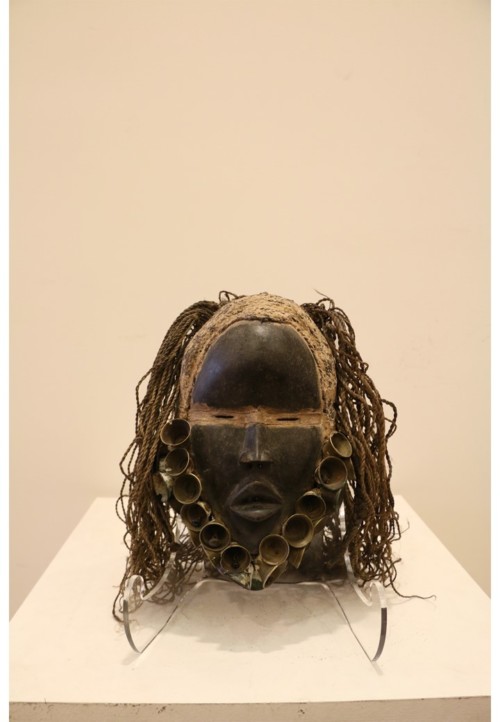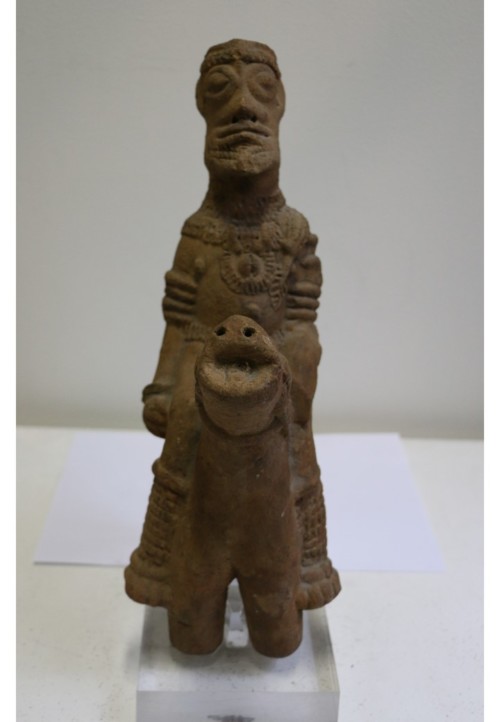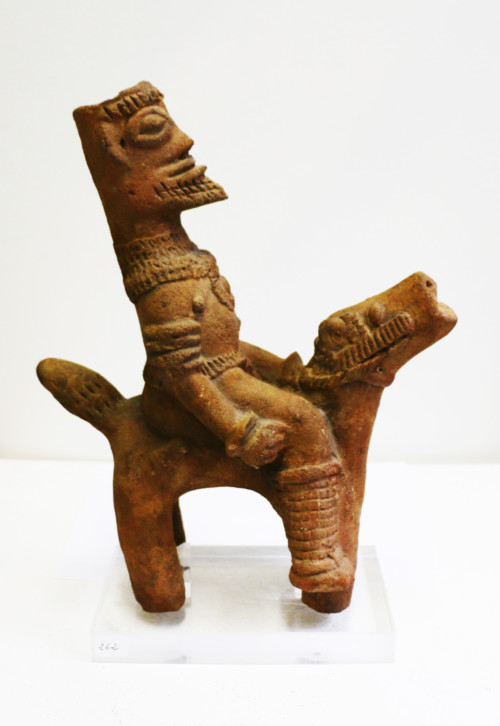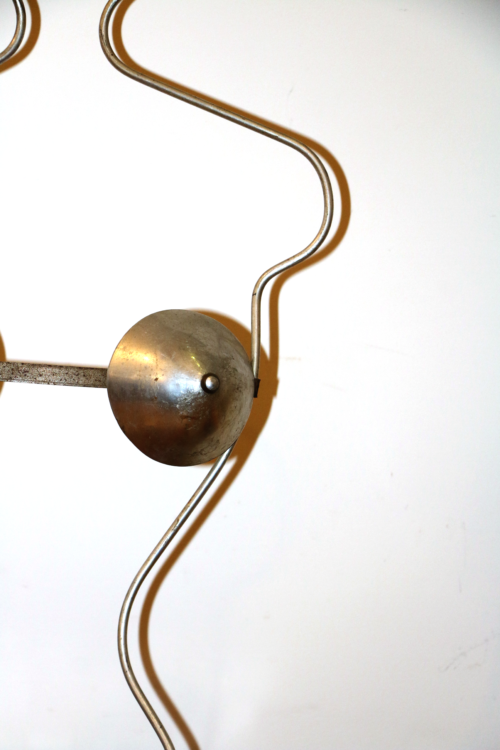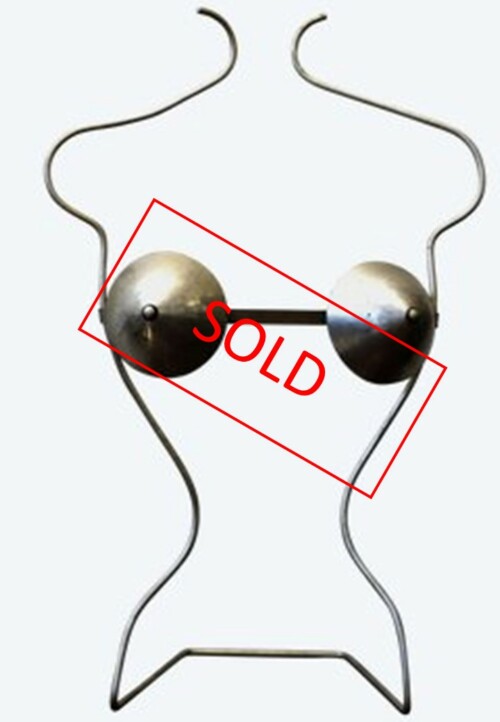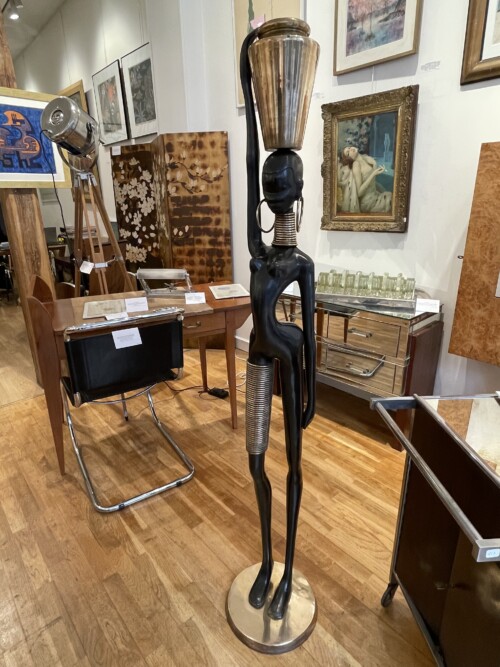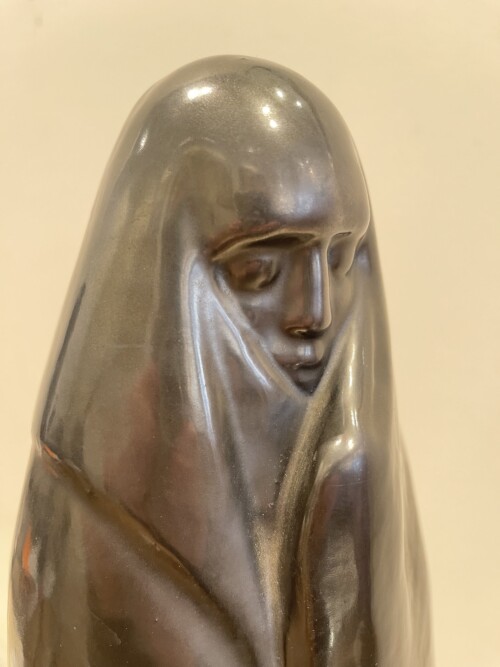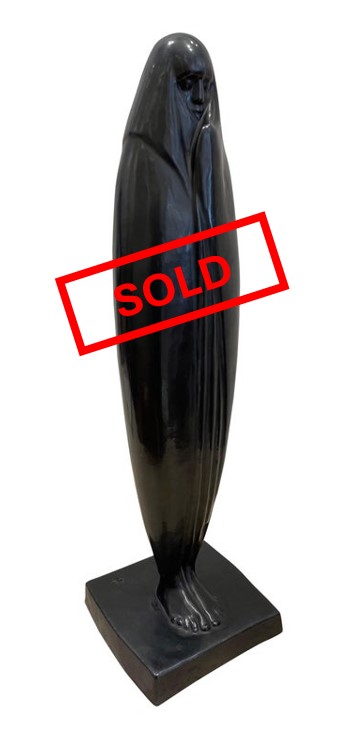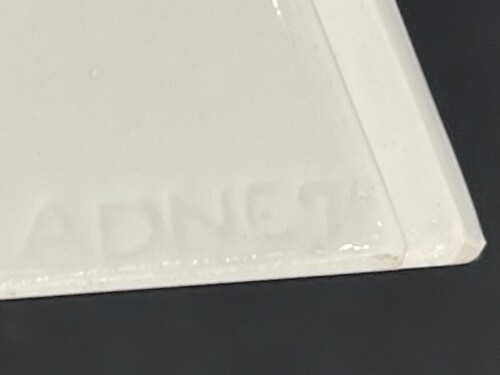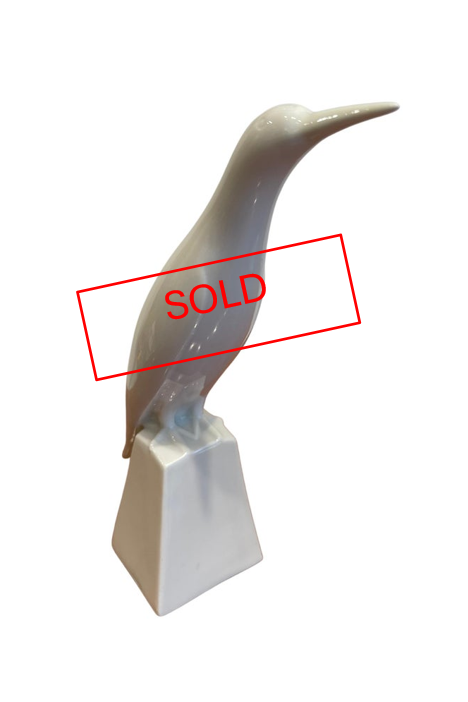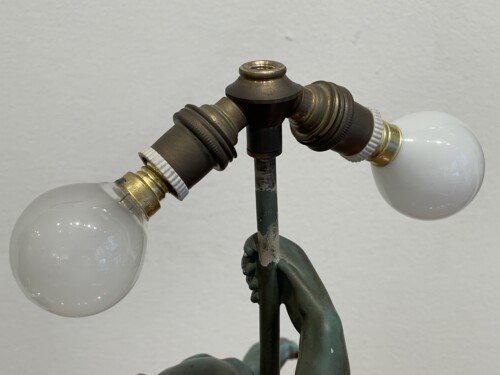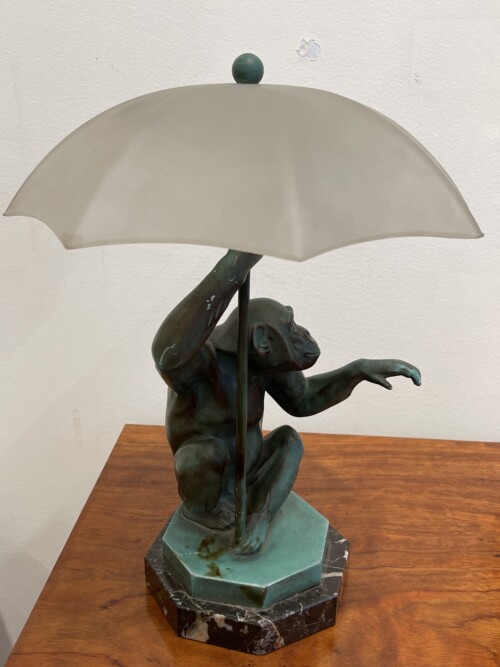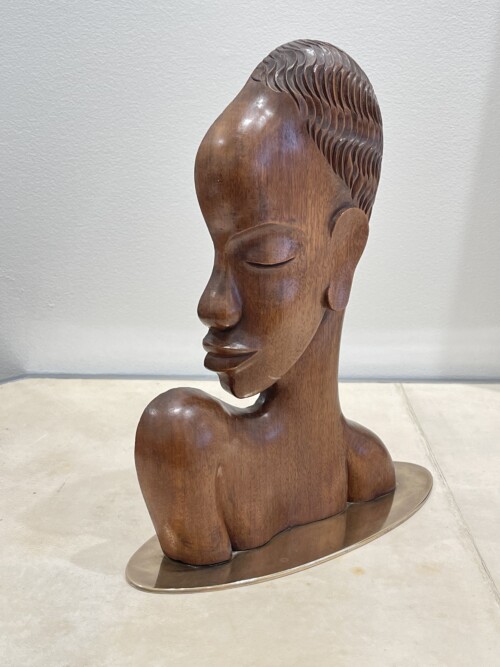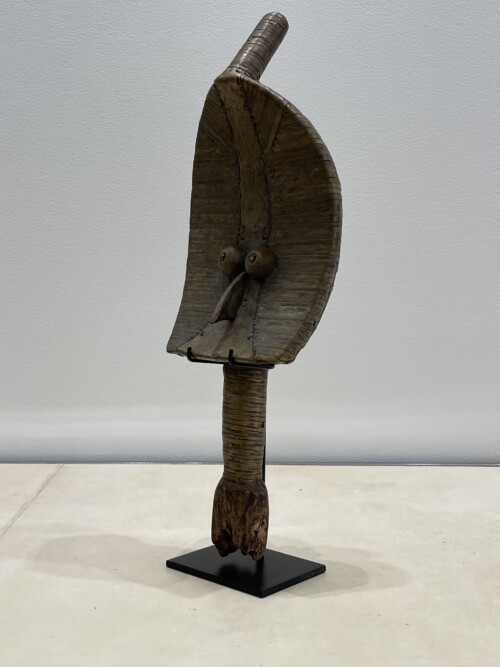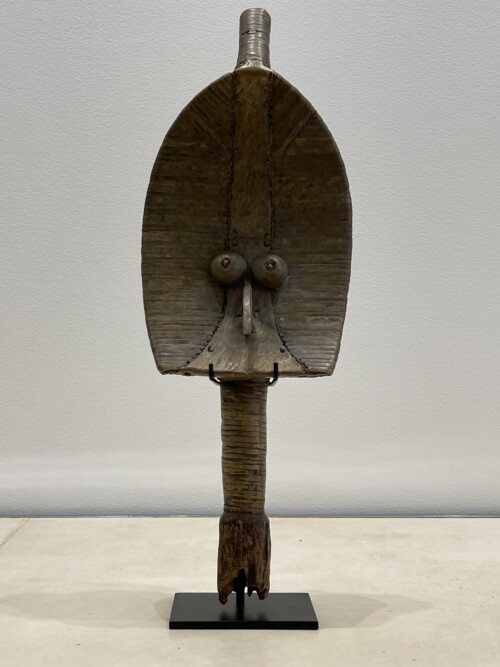Les Dan, sous-tribu des Dan-Nguere, vivent à l'est du Liberia, en Guinée Conakry et en Côte d'Ivoire. Leur structure sociale et spirituelle repose sur la société secrète Poro, signifiant "sierra" en langue temné. La distinction entre Guéré et Wobé n'existait pas avant la colonisation. Dans la tradition orale, ces deux groupes formaient une seule population appelée Wé. La différenciation a été introduite par l'administration coloniale.
Les masques Dan-Nguere, variés et utilisés à des fins diverses selon les régions, se divisent en deux types principaux. Les masques féminins valorisent la beauté du visage avec des traits délicats et une patine brillante. Ils servent à régler les conflits et à protéger les nouveau-nés. Les masques masculins, plus réalistes et parfois ornés de détails animaliers, incarnent la force vitale "du", envoyée par le créateur Zlan. Ces masques sont vénérés et utilisés pour protéger contre les maladies, présidant divers événements sociaux et spirituels, témoignant de l'importance des masques dans la culture Dan.
- Côte d'Ivoire.
- Bois, patine d'usage noire, pigments, nombreuses clochettes en bronze, fibres végétales.
- Première moitié du XXème siècle.
Dimensions : H : 24,5 cm ; L : 21 cm ; P : 10 cm
The Dan, a sub-tribe of the Dan-Nguere, inhabit eastern Liberia, Guinea Conakry, and Côte d'Ivoire. Their social and spiritual structure is based on the secret society Poro, which means "sierra" in the Temne language. The distinction between Guéré and Wobé did not exist before colonization. In oral tradition, these two groups formed a single population called Wé. This differentiation was introduced by colonial administration.
Dan-Nguere masks are diverse and used for various purposes depending on the region. They can be divided into two main types. Female masks emphasize the beauty of the face with delicate features and a shiny patina. They serve to resolve conflicts and protect newborns. Male masks, more realistic and sometimes adorned with animal details, embody the vital force "du," sent by the creator Zlan. These masks are venerated and used for protection against illnesses, presiding over various social and spiritual events, highlighting the significance of masks in Dan culture.
- Côte d'Ivoire.
- Wood, black usage patina, pigments, numerous bronze bells, plant fibers.
- First half of the 20th century.
Dimensions: H: 24.5 cm; W: 21 cm; D: 10 cm.
